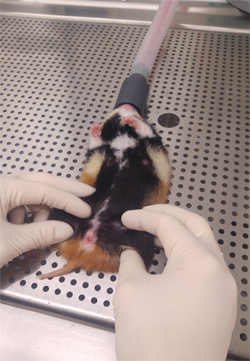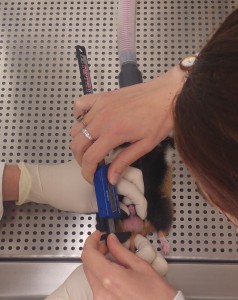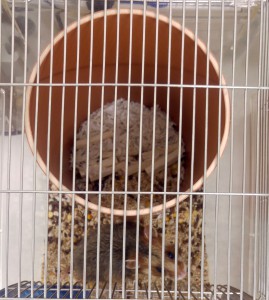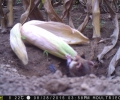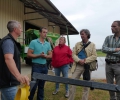Highly-supervised meetings
28 mai 2018Hibernation and reproduction are two critical periods in the life of a European Hamster. In order for populations to remain constant, the animals must be able to get through the winter and therefore to gather sufficient food stores for their needs during this period. When they leave the burrow in spring, they must be able to reproduce and give birth to enough young to withstand the high mortality rate of this hunted species.
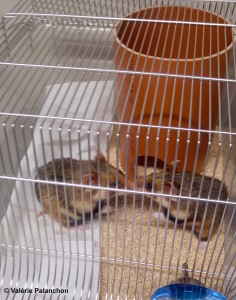 Within the scope of the LIFE Alister project, the CNRS (French National Centre for Scientific Research) is studying the diets that are most suitable for European Hamsters.These studies are led by Florian Klettydoctoral student at IPHC (Hubert Curien Multi-Disciplinary Institute), under the guidance of Caroline Habold , researcher at IPHC and head of the Department of Ecology, Physiology and Ethology (DEPE). They are continuing the studies undertaken by Mathilde Tissier who revealed the dangers of a lack of Vitamin B3 with an almost exclusive diet of corn.
Within the scope of the LIFE Alister project, the CNRS (French National Centre for Scientific Research) is studying the diets that are most suitable for European Hamsters.These studies are led by Florian Klettydoctoral student at IPHC (Hubert Curien Multi-Disciplinary Institute), under the guidance of Caroline Habold , researcher at IPHC and head of the Department of Ecology, Physiology and Ethology (DEPE). They are continuing the studies undertaken by Mathilde Tissier who revealed the dangers of a lack of Vitamin B3 with an almost exclusive diet of corn.
European Hamsters (male and female) were subjected to various diets during hibernation (see below). They have just come out of hibernation and the researchers are going to place them together so they can reproduce.
European Hamsters should only be mated after first checking they are ready. The yearly cycle of hibernating animals is divided into two periods that are completely opposite on a hormonal level; these are hibernation and reproduction. Atrophy of the sexual organs is observed during the period of hibernation: the testicles of male hamsters reduce in size while the vaginal opening of female hamsters closes. It is important to check that the animals are once again ready to reproduce before putting them together, otherwise they may become aggressive to each other.
The pairs are made up of hamsters on the same diet and no common parentage. They stay together for 10 days (during which period the female will be on heat twice). Then the females will remain with her young until they are weaned. The young will be put on the same diet as their parents once they are weaned.
The maturity of the male and female sexual organs is checked while the animals are slightly anesthetised.
When the young are born, the researchers will observe important indications for the study: the number of young in each litter and the survival rate. The young will not be handled to avoid causing stress for the females; they will only pass their ‘medical’ to measure their size and weight once they are already a few days old.
The researchers will be able to observe the females and their young in the nest from above (PVC cylinder)
To make this research meaningful for application in the Alsace Plain, and thus to be used as a long-term solution to protect European Hamsters,
Some of these trials of crop combinations were tested in parallel in the fields and the results were studied by the Chamber of Agriculture for the agronomic aspect and by the ONCFS (French National Hunting and Wildlife Agency) to monitor the European Hamster populations on the plots of land.
Interviews of the researchers HERE

